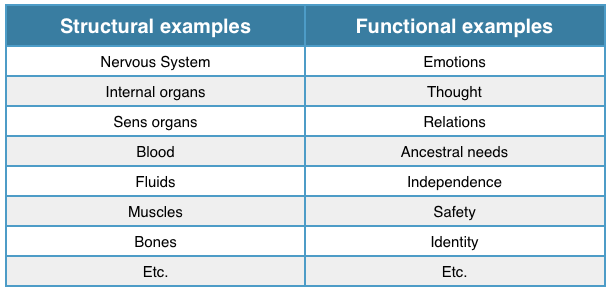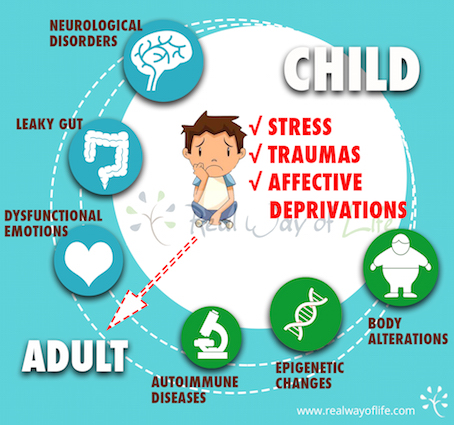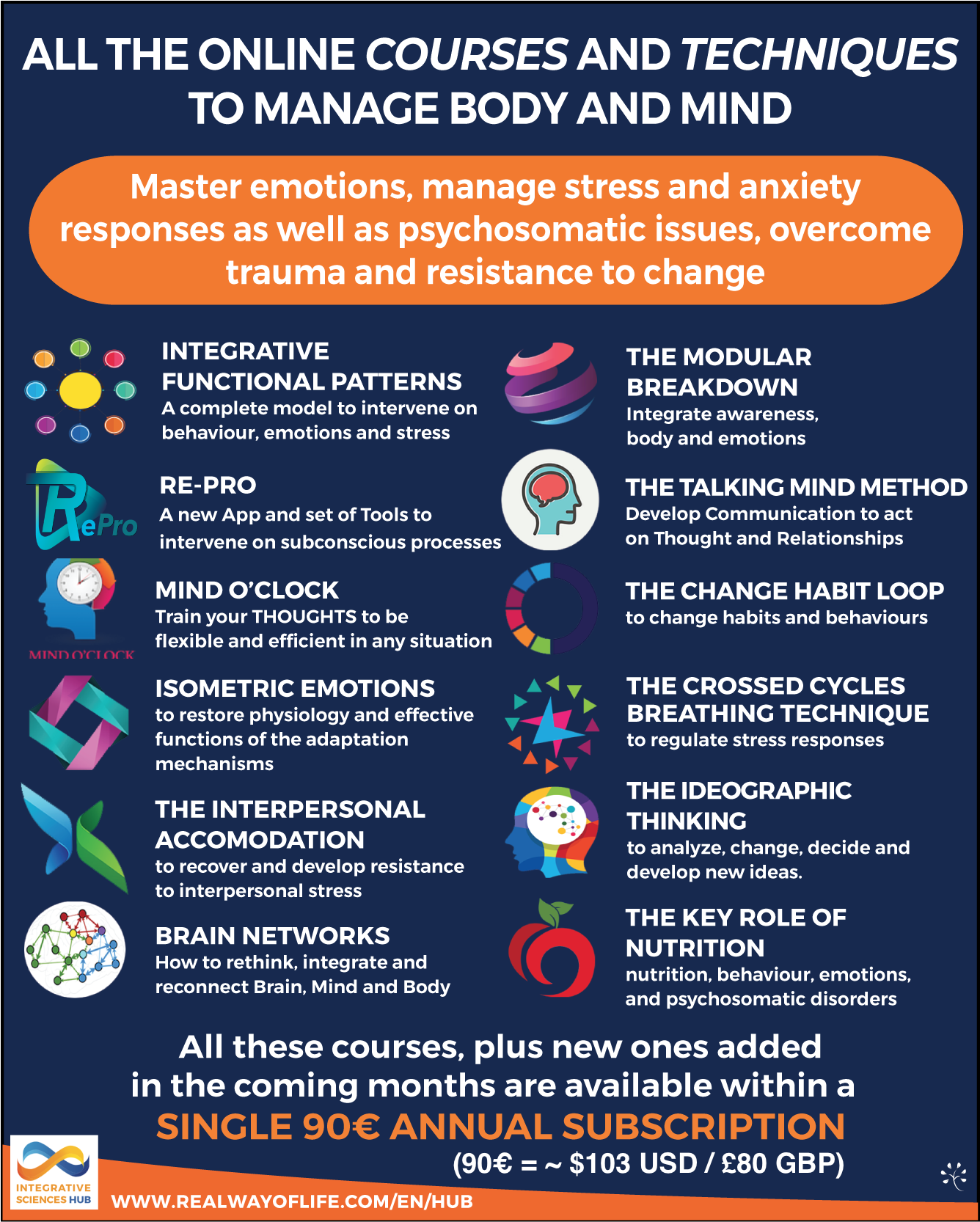
03 Sep Stress, Traumas and Affective Deprivation leaving a Mark. What happens to the Brain, Epigenetic, Emotions, Thinking and what can be done about it
FOREWORD
Traumas, as well as prolonged stress and affective deprivation, leave a sign. It is not just words, it is the truth.
We often refer to “emotional scars”, something that is able to change the way we behave, changing our way of thinking, interacting with other people and acting in every area of our lives, not only the traumatized one.
To make matters clear we defined these changes as functional changes because they refer to the way we function.
On the other hand, there are important structural changes. The number of nervous connections, the development of an area of the brain, connections between structures in the nervous system and neurotransmitters can be changed, even in a meaningful way. Changes can occur also on a non cerebral level, for instance reducing the level of an intestinal microbiota, premature aging of cells in our body, changing the creation of proteins involved in the genetic expression of DNA and more.
Structural changes will lead to functional changes, as we can easily imagine. The decision area in our brain will shrink in both dimension and capacity to correctly transmit signals. It will be harder to assess things and to make up our mind. The opposite is also true: in the long run, a dysfunctional mode can change a structure. As an analogy, if you improperly use a fork, for instance excessively pressing it against a dish, after a while its shape will change and it will be hard to use it.
Thanks to the modern techniques of investigation it is also possible to either study these functional and structural modifications, also pointing out the mechanisms linking the two levels.
In this article we will start analyzing some of the most meaningful modifications following a strong stress, and chronically dysfunctional emotions, affective deprivations or destructive relationships. We will locate some important connections between functional systems, in order to understand how we can help people in a complete and effective way.
WHAT CHANGES
BRAIN NETWORKS AND SECURITY SYSTEM
By saying Default Network we refer to the brain circuits linking different side and medial areas that also related to thinking and memory. We can imagine that like a fridge in standby or, in a more modern way, an app always running in background, which is always ready to help us.
These connections allow us to tell what is relevant from what is not, so that we can easily respond to environmental stimuli.
In a prolonged alert or stress state, our Default Network goes offline. It stops supporting people to correctly distinguish things and understand what to do. People who suffered important stressful episodes in their childhood have not only difficulty accessing this network (as it is always in an alert state and hyper-activated). They also developed fewer connections.
Therefore, it becomes extremely important to bring the Default Network back to physiology, so that its basic daily functioning level is set again. Fortunately, there are many ways to do that, from meditation techniques to aerobic activities, spend more time in the wilderness and more, as well as specific integrating techniques using both physical movement and emotional stimuli at the same time, exercises of neuro-motorial coordination specifically aiming for the network areas.
In our Approach for Integration of Interconnected Systems we developed techniques of isometric contractions flanked by a specific work on emotions and specific techniques to make the activation and deactivation of the Default Network very easy, with the alternation of tasks with a different degree of psycho-physic involvement.
In potentially dangerous situations another network comes into play, something known as Salience Network. Its task is to assess external stimuli (coming from sensory organs) and internal ones (from amygdala) thus deciding whether to activate the Default Network or the Central Executive Network, the center for executive action. It then becomes so clear that, besides bringing the Default Network back to physiology, it will be extremely important to act upon the perceptive-sensory aspects as well as the good responses from the amygdala.
Even in this case it is possible to use some daily stratagems, like assessing stimuli using our side view, changing our focus distance more frequently than how we do when sitting in front of a computer for hours, but also use some targeted exercises of eye movements and direct and indirect sensory stimulations on the other senses.
DIMENSIONS AND BRAIN CONNECTIONS
Strong prolonged stress also have indirect effects on our brain structures and our nervous system. Hippocampus, for instance, tends to shrink in dimensions and functions. Being an area involved in emotional responses, as well as memory and stress related responses, it now becomes clear how a such a change may have negative effects with future self-regulating skills. At the same time there many studies showing that people exposed to many ACEs (Adverse Childhood Experiences) may also have a reduced development of their pre-frontal cortex (essential in problem solving related operations) and amygdala (another basic organ for the basic emotional and interpersonal responses).
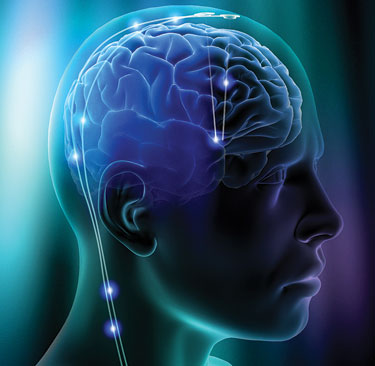 Along with it comes a reduction of the connections between brain areas. People who in their childhood experienced more than two unfortunate experiences have fewer connections than average, for instance between pre-frontal cortex and amygdala, a basic connection to modulate emotional responses to what is happening around us.
Along with it comes a reduction of the connections between brain areas. People who in their childhood experienced more than two unfortunate experiences have fewer connections than average, for instance between pre-frontal cortex and amygdala, a basic connection to modulate emotional responses to what is happening around us.
To favor the correct development of brain areas and connections a correct nutrition is essential. That allows us to have everything that helps us “build and connect” on a brain and a physical level. Some previously mentioned exercises could be used, as well as other targeted ones.
For instance the ones we called E Exercises for Internal and External Mastering, following some steady or changing patterns, a constant or controlled rhythm allowing us to develop its structure and, at the same time, its related functions (in this specific example concentration, mental and emotional control, and being able to turn waiting and frustration into something active).
Exercises where thinking and emotions interact are useful for this purpose. This can be done in many ways. The most efficient ones activate side and multi-function modes, like the graphic representation of thinking, using symbols and icons as a way to connect rational and instinctive parts together, and the triangulation of these two functions using our body.
NEURONAL LOSS AND INFLAMMATION
When developing their nervous system, children experience a hyper-production of neurons and synaptic connections. Evolution takes into account that a part of this network gets consolidated while another part is lost. It is not something that keeps what is used and gets rid of the rest, as we used to think before.
The microglia, a substance of support and nutrition for all our nervous system (which plays a central role on an immune level), plays a decisive role in this process of maintenance or “thinning” of our nervous system.
When a child is facing a strong, uncontrollable and unpredictable stress, the microglia is not able to work properly, releasing a great number of neurotransmitters causing neuro-inflammation.
A central role on this process is played by what we eat and our lifestyle. Nutrition, for people who suffered major traumas or big stress, is not disciplined and has a compensatory nature, for instance abusing inflammatory substances like chocolate or fats when the exact opposite is required.
Besides that, microglia brings nutrition, so it must have really nutrition substances, not poor ones or with side effects.
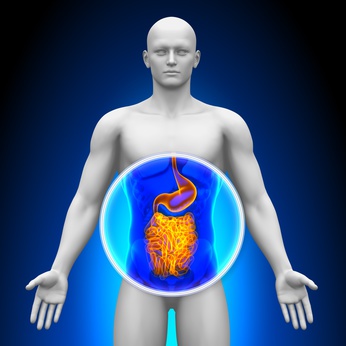 DIGESTING AND IMMUNE SYSTEM
DIGESTING AND IMMUNE SYSTEM
The connection between brain and intestines is well known. For those interested, we recommend to read our article on this topic. Suffice here is to remind that the intestine, also known as “the second brain” is directly linked to the first brain through many networks and that they mutually influence each other.
Intestine plays a central role in the immune system and also influence emotions and is influenced by them. In this process the intestinal macrobiota plays a key role.
With regard to our topic, we have to observe that the microbiota of people who suffered traumas in their childhood is really altered and totally out of physiology. These conditions lead to an inflammation in the whole body, which also leads to other problems on both a structural and functional level.
In such case we must change our nutrition habits, as well as our lifestyle (schedule, sleep, etc.), in a targeted way on the bacterial flora and on the lymphatic system as a supporter of the immune system and toxin eliminator.
A synergy between nutrition and emotions increases and amplifies the effect on both levels, giving the possibility to directly act on some primitive emotional responses which are strongly related to surviving and pleasure.
EPIGENETICS
Epigenetics teaches us that not only our genetic heritage but also the way it expresses itself makes the difference. This is the process with which the information embedded in a gene – made of DNA – is turned into a functional macromolecole, normally a protein. This can drastically change every area of our life, from digestive processes to our type of cutis, from our emotional reactions to our way of thinking and our immune system, to name but a few.
It is a rather complex process, which we can simplify like this: when strong and prolonged stresses occur, a methylic group bonds to the genes that regulates stress responses, preventing it from doing its job properly. Since the function of these genes is altered, the stress response stays inactive and at a high level and cannot therefore get back to physiology.
It then becomes clearer why some people have really huge reactions compared to the initial stimulus: for instance something the bartender says makes someone burst into tears, someone overtaking us makes us so angry in such an intense way we stay angry for a long time etc.
This approach is an important new perspective compared to the previous interpretations. In the past we used to think such hyper-reactions were ways we used to re-experience our trauma in the current situations, or as mental projections or identifications between the one who caused the current event and the person who caused the trauma.
These interpretations are still valid and should be considered every single time. But today it is important to consider the modified genetic expression and find direct ways to adjust it, as well as carrying on a psychological, relational and emotional work.
Such continuous hyper activation causes inflammation, which increases the risk of autoimmune diseases, cancer, depression and other important problems.
It is a circular relationship, where many factors can be either a consequence or a cause. A prolonged sadness can alter the neuro-biological functioning, but also be the consequence of it.
There can be a chain of effects: a wrong nutrition has inflammatory effects and this can change the way we express our emotions in the short term and in the long term, change the genic expression which, on the other hand, will change the expression of emotions. These dysfunctional emotional responses caused by the epigenetic variation can change and alter our digestive and metabolic processes, which can also alter our cognitive evaluation which triggers an emotional response which should be modulated… and so on.
That’s why, once again, we remind how essential it is to always act on more levels and with different modes.




